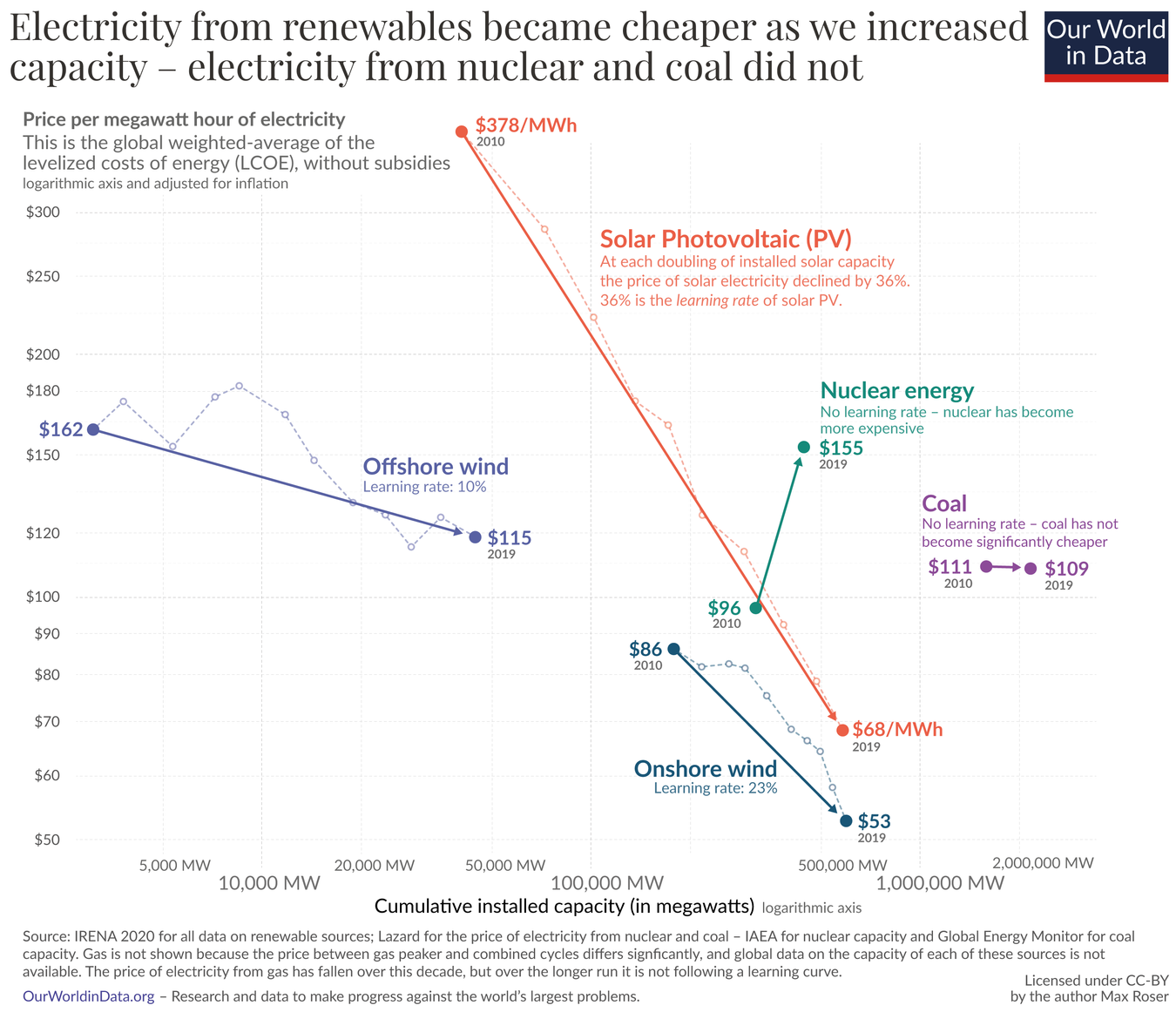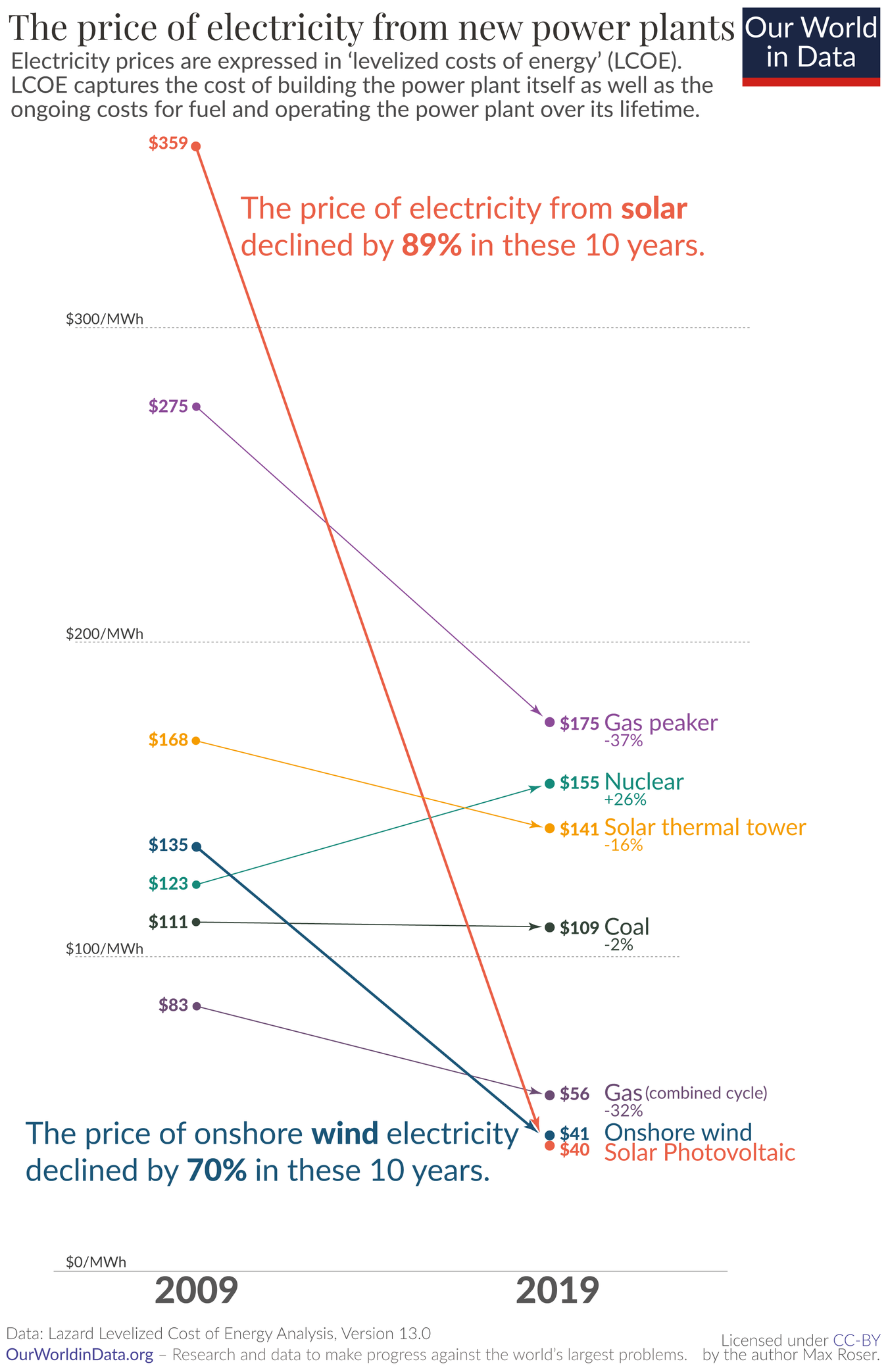Imagine how steep that line would be if the fossil fuel lobbies hadn't been fighting it tooth and nail all these years
Technology
This is the official technology community of Lemmy.ml for all news related to creation and use of technology, and to facilitate civil, meaningful discussion around it.
Ask in DM before posting product reviews or ads. All such posts otherwise are subject to removal.
Rules:
1: All Lemmy rules apply
2: Do not post low effort posts
3: NEVER post naziped*gore stuff
4: Always post article URLs or their archived version URLs as sources, NOT screenshots. Help the blind users.
5: personal rants of Big Tech CEOs like Elon Musk are unwelcome (does not include posts about their companies affecting wide range of people)
6: no advertisement posts unless verified as legitimate and non-exploitative/non-consumerist
7: crypto related posts, unless essential, are disallowed
Without saying anything about politics, environment, or source:
Why, for the love of Satan, does this graph have only 2 data points per source?
Why use a line chart 📉 for that?
This is clear bar chart territory 📊.
I know it's not ideal, but a bar chart design could either focus on the difference over time for each source, or the difference between sources at each time. This plot gives a good representation of both the differences between sources and the change in time for each source. It really drives home how far solar prices have fallen relative to other sources and in absolute terms.
What surprises me, in a way, is that photovoltaics are literally 3,5 times cheaper than just mirrors reflecting light onto a tower. It got REAL cheap. Wish it'd go further!
Dang, it's almost like it was worth all the research money the government crammed into it in the long run, unlike what my dad said to me a million times.
The installation just keeps getting higher. Now to add onto mine I need a load of additional equipment that was not required when my first lot of enphase inverters was installed. Also what was quoted for the labour and materials that are not the panels and inverters has almost tripled in 4 years. Have to get the roof sorted before I go ahead with it and the higher output panels and inverters mean that I would get about another 1.5kw in the same space compared to my first installation.
Rooftop solar is the most expensive way to do it. The graph above is for utility scale systems. Roofs are always custom jobs and they're priced accordingly. Utility scale uses racks that are all the same for an entire field.
If rooftop was priced alone on the chart in OP, it's be around the price of nuclear.
Sweet, now get the panels and installation cheaper so I can afford to put it on my house
We had a solar salesman come by once and told us he could lower our electricity bill the same amount as it would cost us to install the solar panels.
I knew there was something up with this but I decided to let him continue to talk anyways. He does this whole presentation with solar panels and how great they are for a good 30 minutes.
Finally we get to the money part and he keeps emphasizing that they will lower my electricity bill so the cost of them will be made up there. I push him for the total cost of them plus installation and I about died.
$30,000?!?? They literally wanted me to pay for these for 30 years. As long as my mortgage! Aaaaah!!!!
I had a few come over and I was already in the market for solar so I entertained them for a minute. I told them "OK, give me some invoices for your other customers so I know what you charge. Black out the names, I dont care - I just want the prices of your services and materials". These idiots would not stop calling me or coming over to my house for months. I kept telling them "Unless you give me actual, real world dollar amounts, I won't consider it".
Those solar sales guys are worse than used car salesmen.
Some companies in my area are installing them for free, and taking the utility difference. It’s a novel approach.
Further lowering panel cost isn't going to significantly cut that price. Cost of labor is the major part of that.
People always focus on rooftop solar, but it's horribly expensive compared to a field of panels. The economics of scale will almost certainly keep it that way.
What we should be looking at is community solar, where neighborhoods invest in a solar field together.
Pretty clearly shows why there’s no future for nuclear power.
Even for filling gaps in renewables, peaker plants are getting cheaper and don’t take 15 years to build.
And it is always a question how they calculated handling of nuclear waste.
There are options, we can use coal and natural gas for on demand power to fill the gaps in renewables, we don't have to quit all at once. New ideas for energy storage and comming around, some of them might be useful for small towns, others for remote places.
I just installed a 9.3 kW system with individual microinverters under each panel for grid stability and it is absolutely amazing how much you can power all day without threatening a massive bill at the end of the month. I still import power at night, but the power companies usually have agreements where you get credits for all wattage exported to the grid to cover your imported power at night, because both parties win in that contract.
my bill has gone up 89%
Well the electric exec's kid needs a third Ferrari to go with the third Lamborghini they got last year! You're not gonna be so heartless as to deprive a 32 year old child of their birthday wish are you?
Is this just the cost per raw Watt produced?
Is it a fair comparison vs conventional fuel-based power (coal/nuclear)?
Ie: if you wanted to build a plant capable of producing continuously, 24 hours a day, you would need some multiple of solar panels to produce an excess during daylight, and storage.
Not that drastic drops in solar costs aren’t bad, just what would the cost-per-watt be if you had to power an average city on just solar for a year?
Look at the subtitle on the chart, it's levelized cost over the generator's lifetime. So not including storage for any intermittent source like solar or wind
Well you'll never get a "fair" comparison, because the environmental effects are never properly priced into the consumer price.
Thanks, China.
And Germany!
It's frustrating seeing a graph showing the price of electricity going down while my utility prices go up. Does this take into account infrastructure cost?
Government subsidies work for getting new technologies out of the prototype stage and into practical deployment. Solar and wind are both good demonstrations.
Cool…but where’s offshore wind?
I'm not quite sure, why it was left out of that graph, maybe they didn't have matching data, but it is shown here (from the same source article):

I know it's basically a physical impossibility but here hoping to another 89% in the next 10 years (compared to today)
